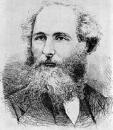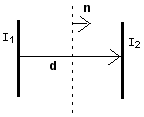| |

Home
Contact Info
Course Info
Calendar
Homework
Lecture Notes
|
|
|
|
PHY 415: Electromagnetic Theory I
Prof. S. Teitel stte@pas.rochester.edu ---- Fall 2019
Problem Set 6
Due Monday, November 18, by 2pm in the homework locker
- Problem 1 [15 points]
A spherical dielectric shell, with inner radius a, outer radius b, and dielectric constant ε, is placed in a uniform external electric field Eo. Find the electric field outside the shell (r>b), inside the shell (r<a), and in the dielectric (a<r<b). What is the field inside the shell in the limit that ε gets infinitely large?
- Problem 2 [15 points]
An infinitely long cylindrical shell of inner radius a and outer radius b, and of magnetic permeability µ, is placed in a uniform extermal magnetic flux density Bo which is directed at right angles to the axis of the cylinder. Find the magnetic flux density B outside the cylinder (r>b), inside the cylinder (r<a), and within the shell (a<r<b). [Hint: express the magnetic field H in terms of a scalar potential, and use separation of variables in cylindrical coordinates.]
- Problem 3 [10 points]
Two infinite parallel wires carrying currents I1 and I2 are separated by a distance d. Compute the flux of electromagnetic momentum -∫daT⋅n passing through an infinite plane half way between the wires; the normal n to the plane is in the direction d. Consider both the cases where the currents are parallel and anti-parallel. Interpret your answer.

- Problem 4 [10 points]
Consider a spherical conducting shell of radius R that has a total charge Q. Compute the total force on the northern hemisphere of the shell.
- Problem 5 [15 points]
Consider, as a classical model of an electron, a uniformly charged spherical shell
with charge e and radius R, spinning with angular velocity ω.
a) Compute the total energy contained in the electromagnetic fields.
b) Compute the total angular momentum contained in the electromagnetic fields.
If Π is the electromagnetic momentum density, then r×Π is the angular momentum density.
c) According to Einstein, the rest energy of a particle is related to its rest mass by E=mc2. If one assumes that all the rest mass m is due to the energy
of the electron's electromagnetic field computed in (a), compute the radius R of the electron.
d) Assuming that the total angular momentum computed in (b) is equal to the intrinsic angular momentum of the electron, ℏ/2, compute the angular velocity
ω of the electron.
e) Are your results in (c) and (d) physically reasonable for the electron?
|
|